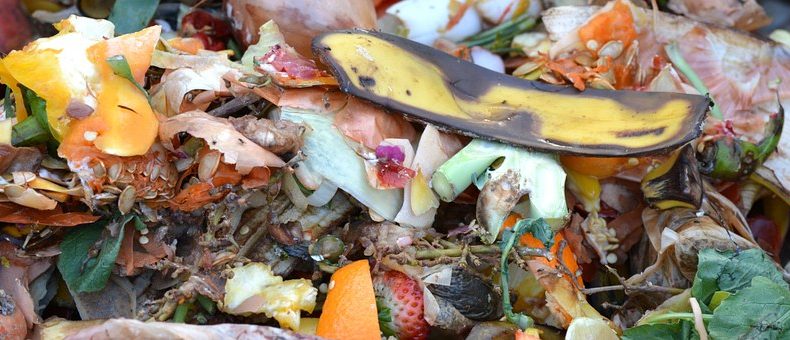
Can innovation ultimately put the lid on waste?
In 2015 £12.5 billion of food waste (£470 per household) was generated in the UK, contributing to a global total which comprised eight per cent of worldwide CO2 emissions. It is clearly no surprise that what we as a society throw away is giving the food industry and consumers serious food for thought. Celebrity-led campaigns such as Hugh Fearnley-Whittingstall’s War on Waste and the Women’s Institute’s recent report have brought the issue to the public’s attention, many of whom see an opportunity for their households to save money while at the same time feel they are doing their bit to protect the environment. Food manufacturers, historically comfortable with reacting quickly to consumer trends and demands, have been swift to innovate, challenging the doctrine that food waste produces higher profits.
Legislation
The reaction of governments and the subsequent introduction of regulation on this issue has been patchy. In France, Scotland and Northern Ireland legislation is already in force requiring the repurposing of food waste, making companies change their current practices. The UK government is also considering a range of tax incentives to encourage innovative companies to deal with their food waste.
Commercial food production
It would be reasonable to suggest that the commercial environment provides the biggest business driver for innovation in this area. The aim is to create an effective solution to food waste which also has a positive impact on profit margin.
One approach from the food supply chain is to find a way to safely stretch an extra day on the use-by date of perishable goods which the processing and packaging process has a big impact on. In one example, researchers from the University of the West of England (UWE) have found that treating fruit and vegetables with a novel solution can increase the shelf life of the produce. The solution kills bacteria that cause spoilage while having no effect on the taste or appearance of the product.
Vacuum skin packaging shows off the quality of a product while providing excellent protection for the produce from oxidation, bacteria and physical damage. This packaging is particularly cost effective with high value items such as fish and meat. Plantic Technologies, an Australian company, has further developed this method by producing a polymer film for vacuum skin applications made from starch. The patent application describes that by using this sustainable material, both the environmental and the economic costs of the polymer are reduced while the film provides a better barrier to oxygen and carbon dioxide than traditional films.
Commercial food disposal
Developments in perishability and storage are clearly helping the fight against waste. However, it’s no secret that busy, commercial kitchens throw away tonnes of waste food every year. Finding out what has been disposed of, and why, is a valuable task but it is difficult to find the time to do this in the hectic kitchen environment. Winnow Solutions, a UK based company, has patented an electronic system which allows a commercial kitchen to easily log the type and quantity of waste it is producing. The resulting data then allows the business to easily identify areas for improvement, saving on average three to eight per cent of food costs.
Anaerobic digestion and composting also helps waste by-pass landfill sites. Researchers at MIT have applied for a patent for a method using bacteria, which are normally used to make yoghurt, to convert raw food waste into lactic acid. In turn the lactic acid can be used to produce the biodegradable plastic polylactic acid. And this polymer can be used to make items from tea bags to medical implants.
Food waste in the home
As inflation outstrips salaries, real wages have been falling since 2010, driving consumers to make savings by tackling home-generated food waste. Reducing this will have the combined benefits of saving money and enabling shoppers to reduce their environmental footprint, generating much goodwill into the future.
Lurking in the average family fridge are items that have been forgotten, pushed to the back of shelves, and are well past their use-by date. Using a camera Bosch’s Home Connect fridge takes and sends photos of the food to a phone app, reminding users of perishable foods already in the fridge. Carers find this feature particularly useful as it negates the need for them to make a house visit purely to check fridge contents before going to the supermarket. Bosch has also filed a family of patent applications to protect fridges that record use-by dates on food, helping the user make informed decisions about what to have for dinner that night.
These are effective but expensive solutions for shoppers who essentially want to save money. A cheap and easy solution for many people is to adjust the fridge temperature to ensure produce is at optimal freshness. After discovering that 74 per cent of shoppers have their fridge thermometers incorrectly set, Sainsbury’s produced and freely distributed easy-to-use fridge thermometers. The thermometers are based on single colour liquid crystal technology and were developed by LCR Hallcrest.
It’s clear that the quest to reduce food waste is a far reaching challenge for the food industry, shoppers and governments. And it can be easy to forget that this is a ‘problem’ much of the global population would welcome. Nevertheless there is clear evidence that the combination of a real wage squeeze for much of the UK’s population and goodwill towards the environment from consumers, together with the gradual introduction of government legislation, will drive and attract innovation in this area.
If your company is developing innovative solutions to address food waste, Barker Brettell may be able to assist you in gaining protection for your innovation. We will work with you to extract your core invention and devise an IP strategy to supplement your business goals. For recommendations and commercially-focussed advice on IP protection in this sector, please contact your usual Barker Brettell attorney.



